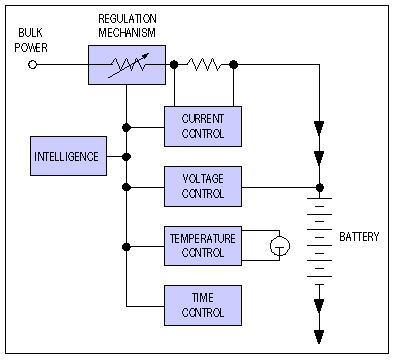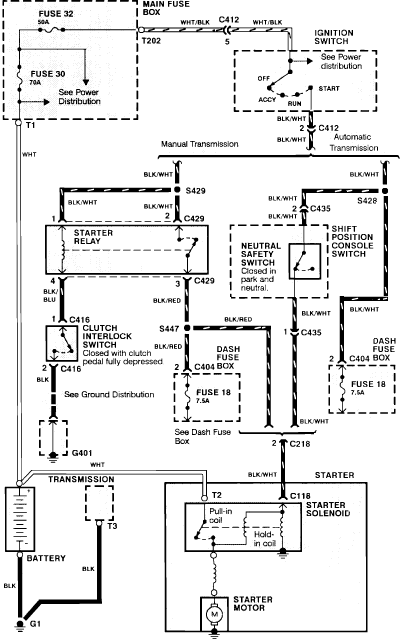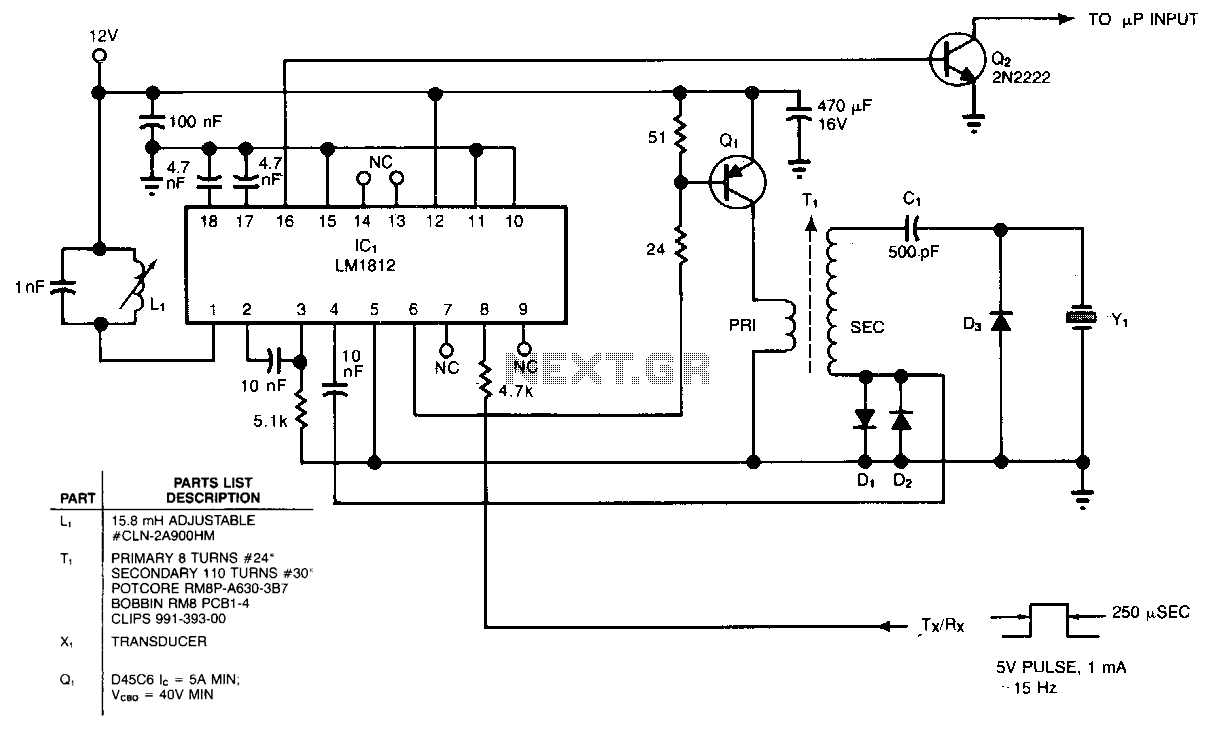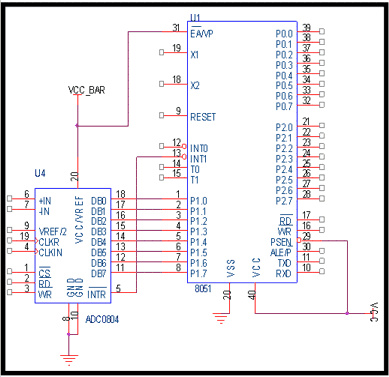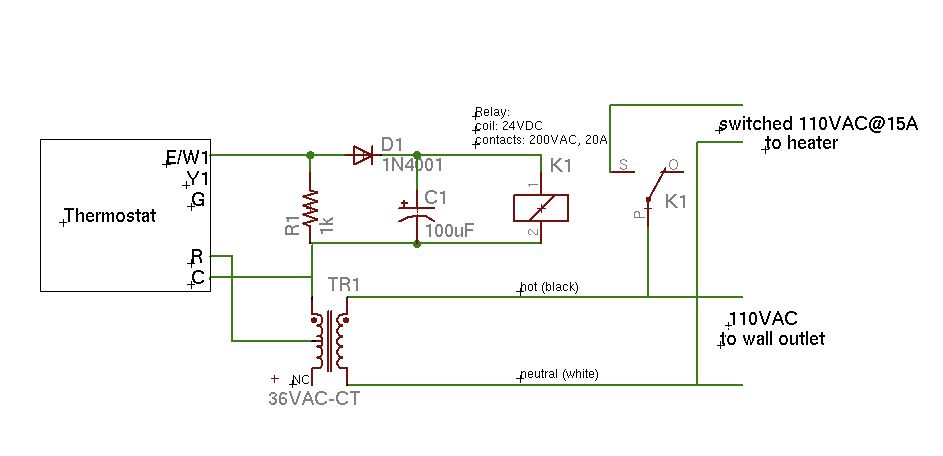
Heating System Thermostat

This circuit is intended to control a heating system or central heating plan, keeping constant indoor temperature in spite of wide range changes in the outdoor one. Two sensors are needed: one placed outdoors, in order to sense the external temperature; the other placed on the water-pipe returning from heating system circuit, short before its input to the boiler. The Relay contact wiring must be connected to the boiler's start-stop control input. Controlled by indoor and outdoor temperature. Simple, high reliability design.
The circuit operates by utilizing two temperature sensors: one external sensor monitors the outdoor temperature, while the second sensor, located on the return water pipe, detects the temperature of the water coming back from the heating system. This dual-sensor approach ensures that the heating system can effectively respond to changes in both indoor and outdoor temperatures.
The external temperature sensor can be a thermistor or a thermocouple, which provides an analog voltage proportional to the ambient temperature. This signal is fed into a microcontroller or comparator circuit that processes the temperature data. The indoor temperature sensor, similarly, monitors the internal environment, ensuring that the heating system maintains a comfortable temperature regardless of external conditions.
The control logic is designed to compare the readings from both sensors. When the indoor temperature falls below a predefined threshold, the control system activates a relay, which is wired to the boiler's start-stop control input. The relay acts as a switch, allowing the boiler to turn on and heat the water circulating through the system. Conversely, when the desired indoor temperature is reached, the relay opens, cutting off the boiler's operation.
The simplicity of the design contributes to its high reliability. The components used in the circuit are chosen for durability and longevity, ensuring that the system remains operational over extended periods. The circuit's effectiveness has been validated through years of use in residential settings, demonstrating its capability to maintain stable indoor temperatures efficiently.
In summary, this heating control circuit exemplifies a straightforward yet effective solution for temperature regulation, leveraging basic components to achieve consistent performance and reliability over time. Proper installation and calibration of the sensors are crucial for optimal operation, ensuring that the heating system responds appropriately to both indoor and outdoor temperature fluctuations.This circuit is intended to control a heating system or central heating plan, keeping constant indoor temperature in spite of wide range changes in the outdoor one. Two sensors are needed: one placed outdoors, in order to sense the external temperature; the other placed on the water-pipe returning from heating system circuit, short before its input to the boiler.
The Relay contact wiring must be connected to the boiler`s start-stop control input.Controlled by indoor and outdoor temperature Simple, high reliability design. This circuit, though simple, has proven very reliable: in fact it was installed over 20 years ago at my parents` home. I know, it is a bit old: but it is still doing its job very well and without problems of any kind. When Q1 Base to ground voltage i 🔗 External reference
The circuit operates by utilizing two temperature sensors: one external sensor monitors the outdoor temperature, while the second sensor, located on the return water pipe, detects the temperature of the water coming back from the heating system. This dual-sensor approach ensures that the heating system can effectively respond to changes in both indoor and outdoor temperatures.
The external temperature sensor can be a thermistor or a thermocouple, which provides an analog voltage proportional to the ambient temperature. This signal is fed into a microcontroller or comparator circuit that processes the temperature data. The indoor temperature sensor, similarly, monitors the internal environment, ensuring that the heating system maintains a comfortable temperature regardless of external conditions.
The control logic is designed to compare the readings from both sensors. When the indoor temperature falls below a predefined threshold, the control system activates a relay, which is wired to the boiler's start-stop control input. The relay acts as a switch, allowing the boiler to turn on and heat the water circulating through the system. Conversely, when the desired indoor temperature is reached, the relay opens, cutting off the boiler's operation.
The simplicity of the design contributes to its high reliability. The components used in the circuit are chosen for durability and longevity, ensuring that the system remains operational over extended periods. The circuit's effectiveness has been validated through years of use in residential settings, demonstrating its capability to maintain stable indoor temperatures efficiently.
In summary, this heating control circuit exemplifies a straightforward yet effective solution for temperature regulation, leveraging basic components to achieve consistent performance and reliability over time. Proper installation and calibration of the sensors are crucial for optimal operation, ensuring that the heating system responds appropriately to both indoor and outdoor temperature fluctuations.This circuit is intended to control a heating system or central heating plan, keeping constant indoor temperature in spite of wide range changes in the outdoor one. Two sensors are needed: one placed outdoors, in order to sense the external temperature; the other placed on the water-pipe returning from heating system circuit, short before its input to the boiler.
The Relay contact wiring must be connected to the boiler`s start-stop control input.Controlled by indoor and outdoor temperature Simple, high reliability design. This circuit, though simple, has proven very reliable: in fact it was installed over 20 years ago at my parents` home. I know, it is a bit old: but it is still doing its job very well and without problems of any kind. When Q1 Base to ground voltage i 🔗 External reference
